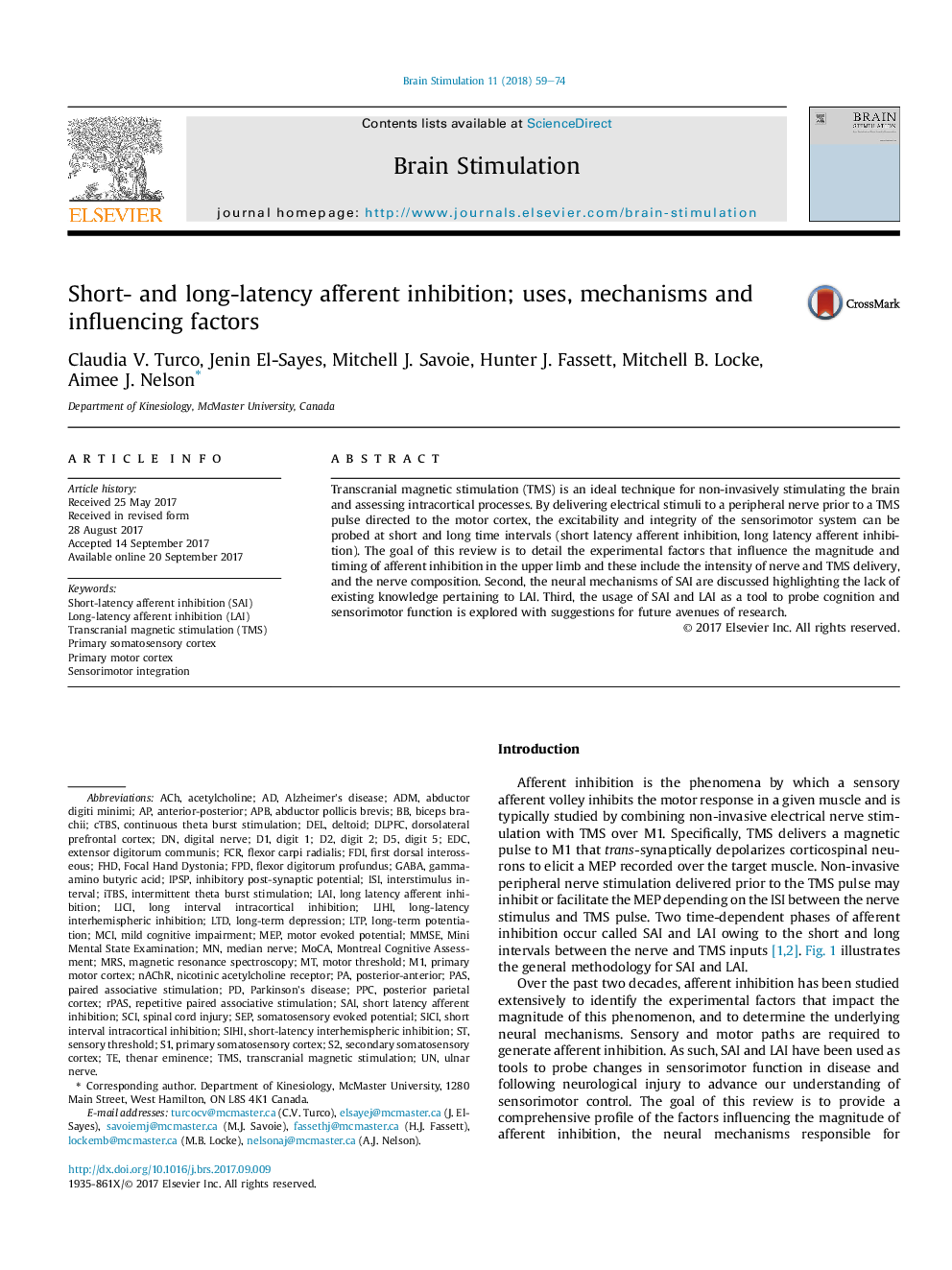| Article ID | Journal | Published Year | Pages | File Type |
|---|---|---|---|---|
| 8681533 | Brain Stimulation | 2018 | 16 Pages |
Abstract
Transcranial magnetic stimulation (TMS) is an ideal technique for non-invasively stimulating the brain and assessing intracortical processes. By delivering electrical stimuli to a peripheral nerve prior to a TMS pulse directed to the motor cortex, the excitability and integrity of the sensorimotor system can be probed at short and long time intervals (short latency afferent inhibition, long latency afferent inhibition). The goal of this review is to detail the experimental factors that influence the magnitude and timing of afferent inhibition in the upper limb and these include the intensity of nerve and TMS delivery, and the nerve composition. Second, the neural mechanisms of SAI are discussed highlighting the lack of existing knowledge pertaining to LAI. Third, the usage of SAI and LAI as a tool to probe cognition and sensorimotor function is explored with suggestions for future avenues of research.
Keywords
FCRFHDDLPFCSAIITBSSEPAPBMMSEMoCAFPDIPSPSICInAChRADMMRScTBSMEPRPASLICITMSEDCPPCSomatosensory evoked potentialSensory thresholdmotor thresholdSpinal cord injuryAChISIFirst Dorsal Interosseousabductor pollicis brevismild cognitive impairmentsensorimotor integrationMontreal Cognitive AssessmentAcetylcholinelong-term depressionextensor digitorum communisAlzheimer's diseaseParkinson's diseaseIntermittent theta burst stimulationTranscranial magnetic stimulation (TMS)Transcranial magnetic stimulationPaired associative stimulationContinuous theta burst stimulationlong-term potentiationLTPposterior-anteriorDELDeltoidfocal hand dystoniaflexor carpi radialisbiceps brachiiAbductor Digiti MinimiFDILAImagnetic resonance spectroscopyDigital nerveUlnar nerveMedian nervesciInterstimulus intervalFlexor digitorum profundusprimary somatosensory cortexprimary motor cortexposterior parietal cortexdorsolateral prefrontal cortexSecondary somatosensory cortexLTDMini Mental State Examinationshort interval intracortical inhibitionShort latency afferent inhibitionMotor evoked potentialPASMCIinhibitory post-synaptic potentialAnterior-PosteriorGABAgamma-amino butyric acidnicotinic acetylcholine receptor
Related Topics
Life Sciences
Neuroscience
Biological Psychiatry
Authors
Claudia V. Turco, Jenin El-Sayes, Mitchell J. Savoie, Hunter J. Fassett, Mitchell B. Locke, Aimee J. Nelson,
